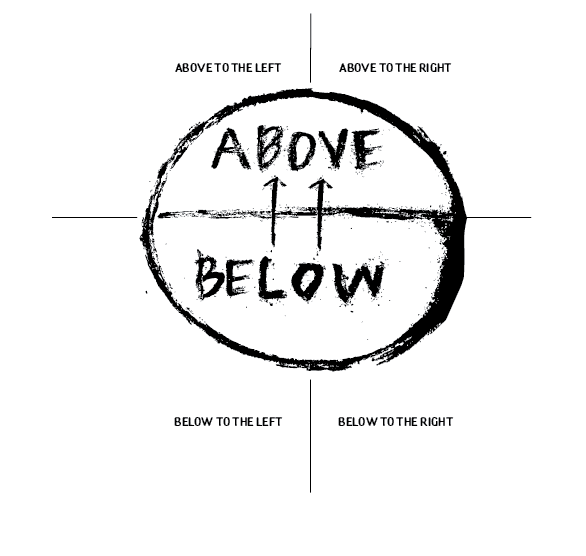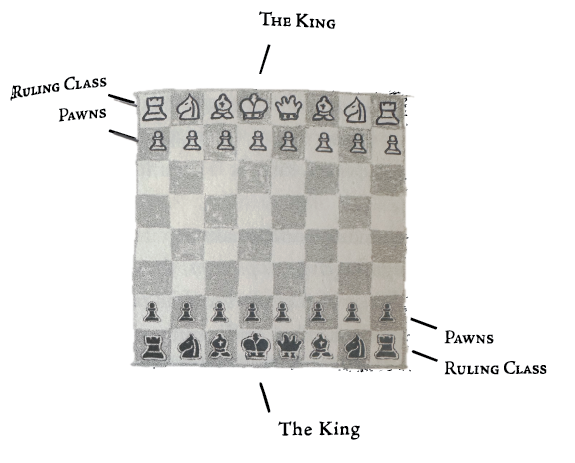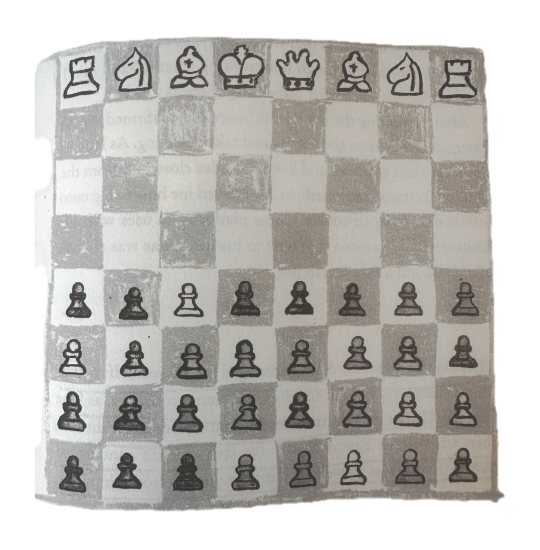This is The Game
Let’s play a different one
New folks welcome—so glad you’re here! Seems like the community’s digging these last few pieces. If you haven’t gotten a chance to read, check them out:
Deep gratitude to everyone who helps this fledgling space out by becoming a paid subscriber. I know times are tough right now, so in whatever ways you’re able to show up to make this work possible, I’m genuinely grateful you’re here.
Today’s piece is one I’m excited to share—it’s a synthesis of some of my learning from a book that recently cracked my mind open, Palestine 1492 by Linda Quiquivix. I highly recommend taking the time to read it. Until then, hopefully I can share some of Linda Quiquivix’s wisdom in today’s dot-connecting.
This is the game
The game goes like this: to crush or be crushed. Nearly all of us are playing without consent. Most of us are playing it from below.
Here is a photo that shows the way most of us play the game, from the most recent unruly book to crack my mind wide open: Palestine 1492 by Linda Quiquivix.

From below, we spend an inordinate amount of our time grinding our way to reach the above for basic safety, lest we be crushed. If we make it, we become the ones doing the crushing. This is the game.
To be below is to be crushed by the above. Most of us are playing from below, working in the direction the arrows point, trying to escape being crushed by becoming a part of the above: part of the ones doing the crushing. If we refuse, we stay of the below, being crushed. Quiquivix says:
When all one knows is that those above live in some kind of stability, control, and even fun while crushing you down below, desiring to be just like Them can be an overwhelming temptation.
It is easy to see why so many of us stay in this game. No one wants to be crushed. It is overwhelmingly tempting to try to trade being crushed for stability, control, and fun.
Here is the same photo of the game, transposed by me with another framing by Quiquivix:
All of us sit within these four quadrants: below and to the left, below and to the right, above and to the left, above and to the right. Quiquivix says:
To be below and to the right is to wish to become the above, to become like the masters, to impose one’s world on and crush the other belows. To be to the right is to not respect difference. There exist Christianities from below and to the right. There exist Judaisms, Islams, Buddhisms, Hinduisms, Marxisms, Anarchisms from below and to the right, as well as from above and to the right and from above and to the left.
She uses “left” as an imperfect word “to convoke and to affirm an ethical posture against injustice, a vision of sharing the world with all our difference.”
This is the game. Above and below. Left and right.
Understanding where we fall in the game.
We first have to understand where we fall in the game and the choices we’ve historically made within that, to become conscious of how we might play it differently going forward.
In my own life, I’ve teetered between living squarely below and to the left and slightly above and to the left, depending on my work, my context, and my proximity to whiteness and/or privilege in any given moment. Often, I live at the razor’s edge between the two, teetering on an evaporating middle-class tight rope in a city with no tolerance for the in-between.
The way I talk about my own positionality changes based on whether I’m talking about the nuclear family I’m currently a part of, the immigrant family I grew up in, or myself individually. It also changes in my day-to-day, hour-to-hour, moment-to-moment interactions.
When I was a single teacher in West Harlem teaching with other black and brown folks, I fell squarely in the below. When I started my consulting practice a decade later, I individually became of the above. When I took leave from my consulting practice during COVID, I rejoined the below, the precarity hitting me acutely—my individual footing suddenly unsteady again, though tethered to the above by my cis-het-white nuclear family.
I feel this push and pull in real time—one moment, I’m advocating for liberation at a protest, fully aware of my individual below-and-to-the-left identity. The next, I am facilitating strategic advising meetings, where my white-adjacent status, my wielding of white-normative language, and my deftness in strategic white spaces shifts my positionality—a pull toward the above.
Proximity to cis-het-tech whiteness offers a tether to the above not of my own making. But proximity is assimilation into the above. And it comes at a cost: an erosion of one’s identity and belonging to the below. The unconscious choices to assimilate of my younger self that led to this erosion are ones I actively am in process to unwind today—through my work, the relationships I move toward, and the communities I build with.
I do not want to do the crushing. I do not want to relinquish my safety and belonging. I do not want to be crushed.
I don’t think anyone on the left wants to crush. No one from below wants to be crushed. Quiquivix says:
The wretched of the earth’s choice to help crush other wretched cannot be fully condemned without condemnation of the world that produces that choice, that produces a people as wretched, a people as condemned. The two choices are to go above or remain crushed below. It’s understandable to choose to assimilate, but a below still remains. Again, understandable, but not ethical. An imbalance still remains, the trauma remains, the terror of falling remains, extermination remains. Genocide remains.
This game is rigged. Above or below. To crush or be crushed. These are two heinous choices.
What if we played the game differently?
If the only choices the game offers are to crush or be crushed, then we need to ask: Are there other moves available to us?
Some people, whether by choice or by circumstance, have already found ways to disrupt the game’s logic—not by moving upward, but by shifting their relationships within the board itself.
Here’s a way some folks—mostly some immigrants—play the game:
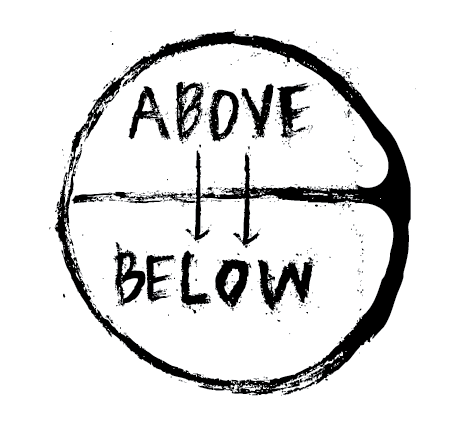
Quiquivix describes how some sociologists have warned of this trend, which they’ve coined “downward assimilation”:
For children of today’s immigrants, sociologists have coined a term of caution: downward assimilation. It’s what they call Brown people who share their lives and fates with Black people more than they do with White people.
Sociologists might have coined downward assimilation as a warning—cautionary, I suppose, because it is subversive. Cautionary, I suppose, because it is surprising. Cautionary, I suppose, because players make choices outside those the game intends them to.
Cautionary for whom, exactly?
This got my wheels turning about the power we have as players within the game to disrupt it with different choices, even given the harsh conditions that penalize deviation.
To sociologists wishing to preserve the game, downward assimilation might be a warning. But to me, when I saw this image, I saw myself and my own process. In my body, “downward assimilation” feels a hell of a lot like the winding journey of building an anti-racist + decolonized + anti-capitalist + feminist + neuro-inclusive + disability justice + LGBTQIA2S justice lens.
Or, to put another way, it feels akin to liberation work.
What if we changed the conditions of the game?
My favorite chapter in this book—the one that connected all the dots together in my neural pathways—is the chapter on strategy and tactics. Here, Quiquivix talks about chess, the game where two opposing teams battle to capture the opponent’s kings, sacrificing their lesser pieces along the way.
She says of the game:
I only know enough about the conditions of chess to critique it, but not because it requires critique, but because the way people talk about chess requires critique. People seem to believe the chess board is the only nature of the world, the only possible configuration of the world. (emphasis mine)
What if that’s not true? What if the conditions of the game can be changed? Who has the power to change them? To that question, Quiquivix references Che Guevara’s quote from his book Guerilla Warfare, where he says:
It is not necessary to wait until all conditions for making revolution exist. The insurrection can create them.
Insurrection sounds like a word folks might shrink away from. But what if instead we said: we, the people, can create the conditions to change the game. She continues on to say:
They say the chessboard hasn’t changed for 500 years. If it’s true it’s not necessary to wait for the conditions to change…then what if the pawns changed the chessboard conditions? What if the least powerful, the annonymous front lines, the ones sent out first to fight and first to die, the disposable ones, the least valuable ones changed the conditions? What if the ones below could change the landscape of battle by changing their relationship to each other? (emphasis mine)
Here’s an example of an illustration she shared from a series called La Vida en el Ajedrez, Life in Chess. This illustration is called Revolución, and has 32 pawns against royalty and their guards.
She played this image out in real life and discovered this truth:
32 pawns on a chess board can overpower the pieces and capture the king, not by changing the power of the pawns, but by changing their relationship to the pieces. And by changing their relationship to each other. (emphasis mine). In order to shake off the oppressor, the Pawns must stay close together, keeping each other safe while moving forward, knowing some will be martyred. Still, while the odds of winning are good, winning is not a guarantee.
Within the same gameboard, we have the power to change the conditions, just by playing our roles out differently, just by changing our relationship to each other along the way.
What if we played a different game?
If enough of us turn away from the conditions of the above/below game, are we fundamentally playing a different game?
It’s hard to turn completely away without harsh penalty, but many of us are actively working as bridgebuilders—building pathways from the world as it currently exists (a game of above/below) to the world we dream (a side-by-side world where everyone fits). Quiquivix says:
To dismantle this world and to create the world anew, to build a world in common where all the worlds fit, side by side, with all our difference, we need to first start with those who do not fit.
We change the game by centering those who do not fit. We change the game by starting local. We change the game by changing our habits in community. We change the game by cultivating an untamable mind. We change the game by inhaling unruly books. We change the game by getting strong, growing food, and building robust community.
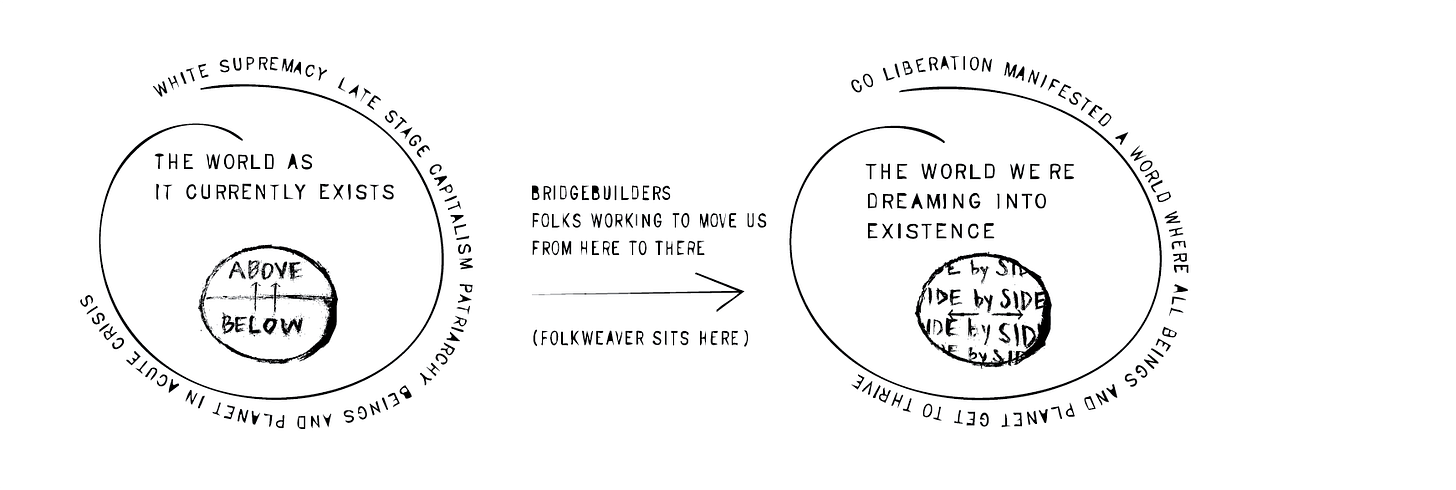
We change the game by building alternative, self-sustaining systems—for all of us—rooted in collective care.
When we change our relationships to each other and build something different at a microscale, in our own communities, all of our work starts to weave together to make up a robust web of radical care. Then what we weave becomes the new game. When we do that, the game of the above and below becomes obsolete.
What aha moments do you have reading this? How does it help you better understand your life? How does it help you better understand the task before us?
In creating new games,
Sara
If you like what you read here, can you take a moment to like it, restack it with a note, share it, or comment? Those actions hugely help others find their way to this space.



